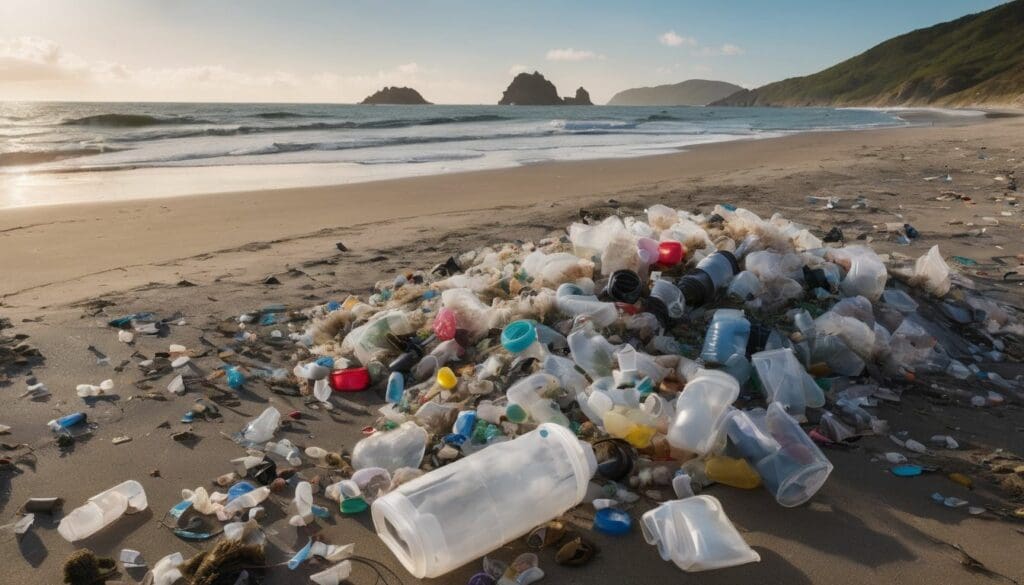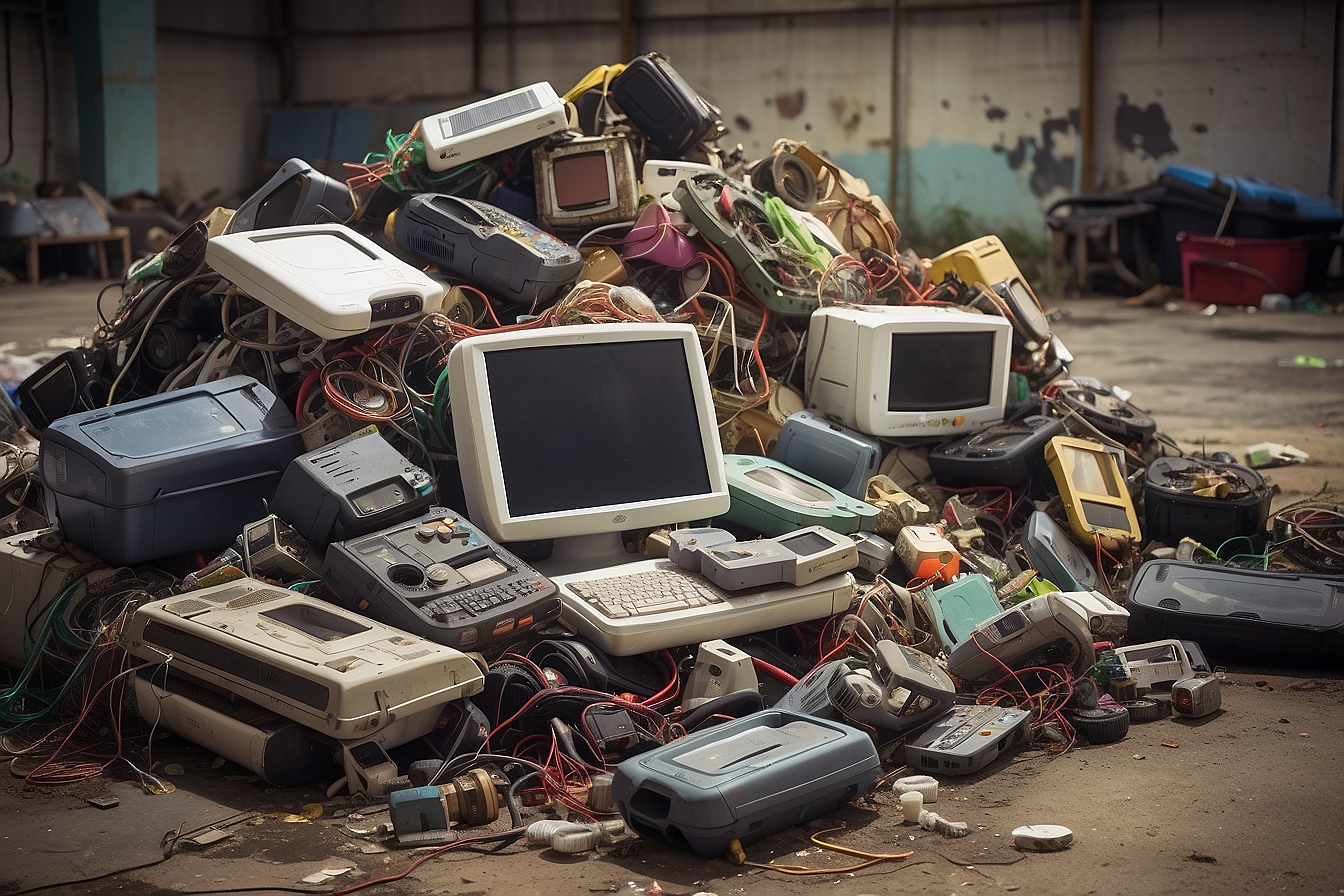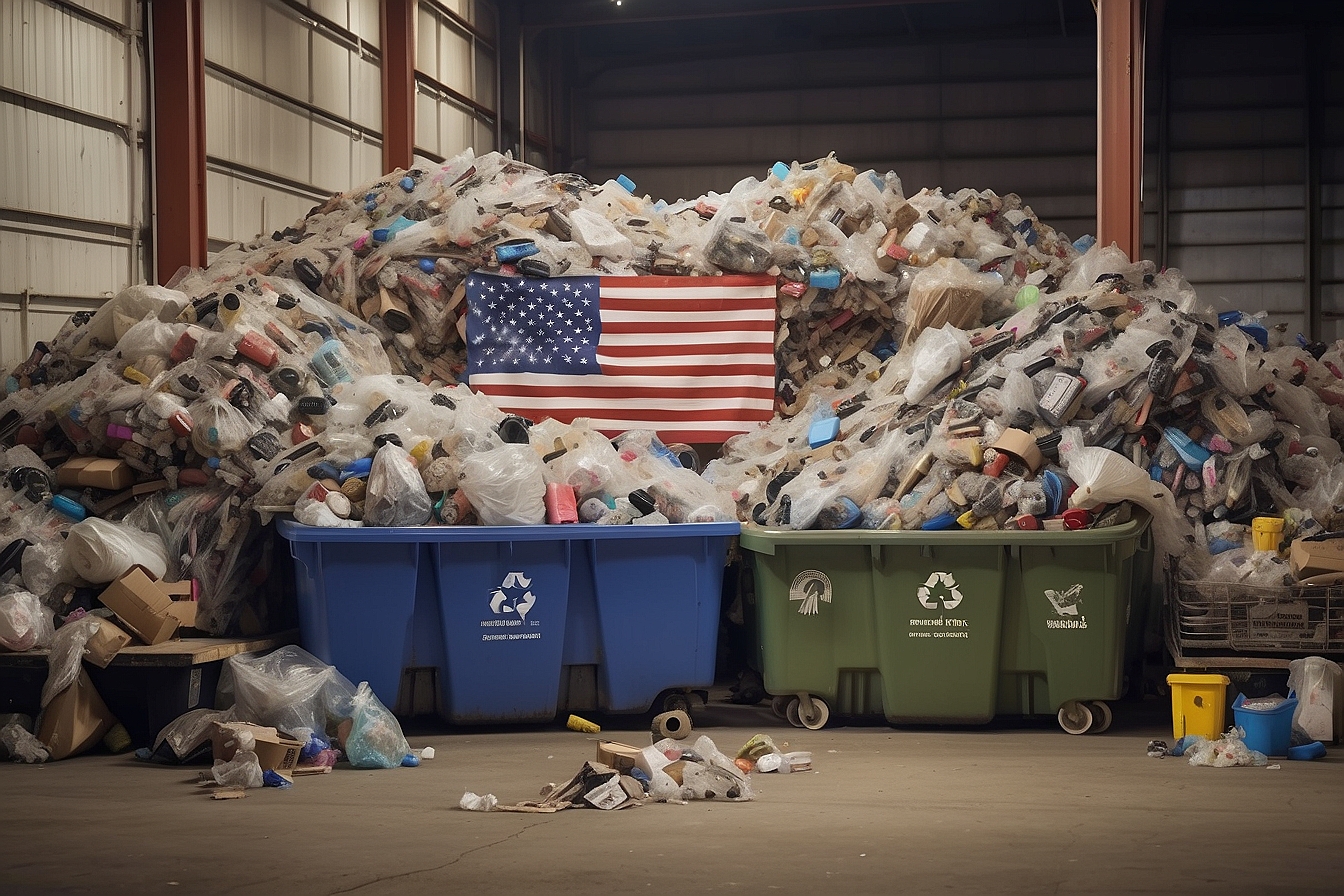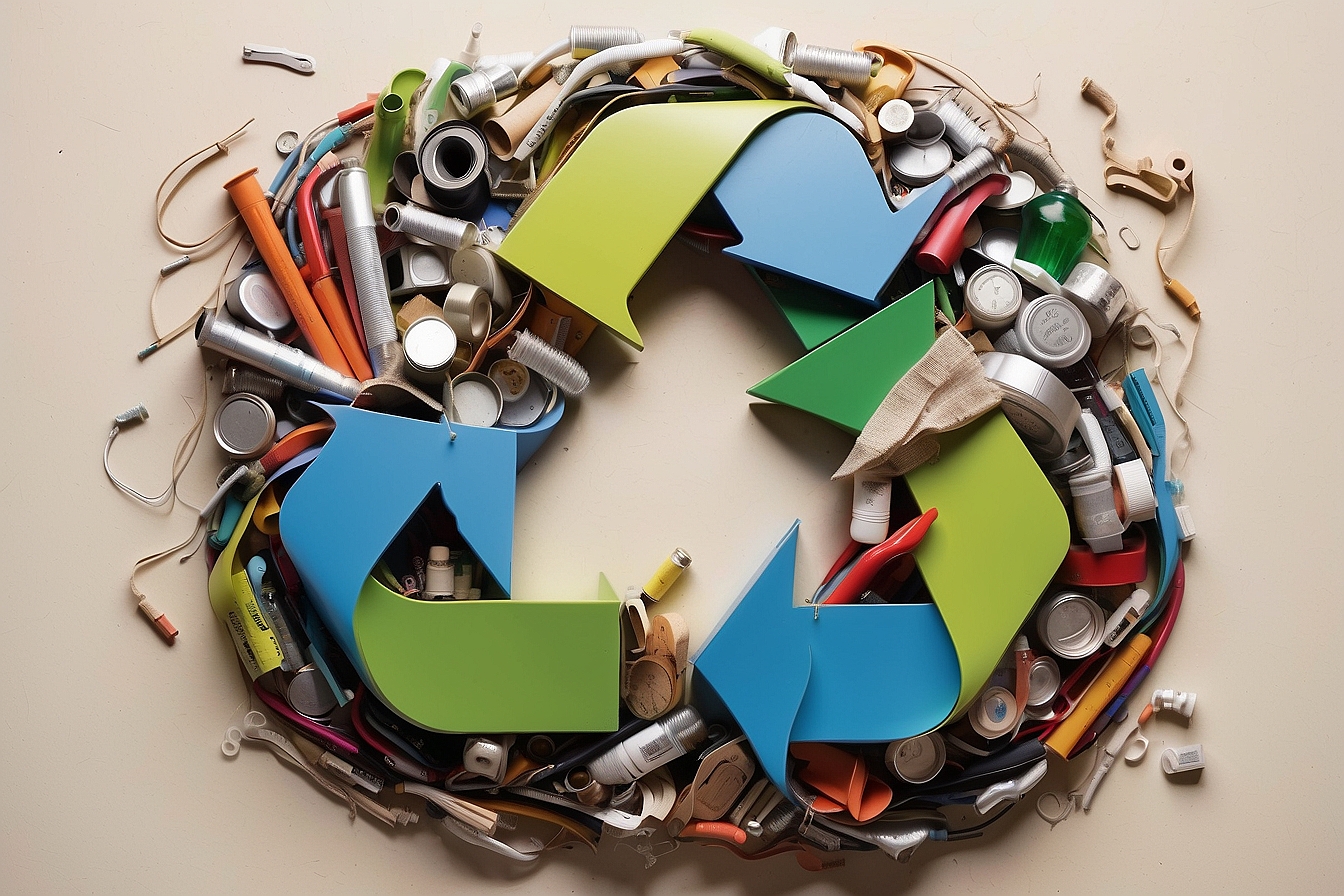Each day brings a fresh challenge as we’re greeted by the disheartening sight of plastic waste – an unwelcome visitor on our once-pristine beaches, our leafy parks, and our bustling streets.
Like many of you, this issue weighs heavily on our hearts. We’ve learnt that over 300 million tonnes of plastic are churned out annually, with a staggering amount being single-use.
Our latest blog post delves into the world of these plastics to truly understand them and outlines tangible strategies to courageously confront this problem together. Let’s roll up our sleeves and march towards a future where our planet breathes cleaner air!
Key Takeaways
- Single – use plastics are made mainly for one use and include items such as bags, bottles, straws, and packaging which add substantially to environmental pollution.
- Animals often mistake plastic waste for food leading to harmful consequences while the production process of these plastics contributes significantly to climate change through greenhouse gas emissions.
- Less than 10% of produced plastics get recycled with most ending up in landfills or polluting natural habitats; over 1 trillion plastic bags are used each year globally.
- Harmful chemicals from single – use plastics can seep into food and water causing potential health issues like hormonal imbalances; microplastics have been found in our food supply raising concerns about human health risks.
- Reducing single-use plastic consumption is essential – using alternatives like reusable bottles, supporting businesses that use sustainable packaging materials, and participating in community clean-ups make a tangible difference.
What Are Single-Use Plastics?
Single-use plastics are items that are designed to be used once and then thrown away, such as plastic bags, straws, and food packaging. They are produced in large quantities and have a significant negative impact on the environment.
Definition and examples of single-use plastics
Single-use plastics are items typically intended for one-time use before they are thrown away or recycled. These include products like plastic bags, straws, coffee stirrers, soda and water bottles, and most food packaging.
We see them everywhere; they make our daily lives easier but come with a long-term cost to the environment.
Often made from fossil fuels, these disposable plastics contribute significantly to global plastic pollution. They flood our landfills after briefly serving their purpose and sadly end up littering oceans and harming wildlife.
Let’s examine how this massive production of single-use items is affecting our planet in the next section on the negative impacts of these materials.
Production and usage statistics
Understanding single-use plastics and their widespread presence is crucial. We now turn our attention to the scale of their production and consumption. These materials pervade our daily lives, often unnoticed until we consider the sheer volume created and used globally. Let’s dive into the numbers.
| Statistic | Details |
|---|---|
| Global Production | Approximately 300 million tonnes of plastic produced annually, with a significant portion being single-use. |
| Consumption Rate | Millions of single-use plastic bags, bottles, and straws are used globally every minute. |
| Recycling Rate | Less than 10% of produced plastics are recycled, with single-use plastics being the least recycled. |
| Waste Management | Majority of single-use plastics end up in landfills or as litter in natural environments, including oceans. |
| Plastic Bags | Over 1 trillion plastic bags are consumed worldwide each year, most of which are single-use. |
| Plastic Bottles | More than 480 billion plastic drinking bottles were sold in 2016 alone, and the number has been rising. |
| Straws and Stirrers | An estimated 500 million straws are used every day in the United States. |
| Microplastics | Single-use plastics breakdown into microplastics, which are now pervasive in our water and food supply. |
We acknowledge these disturbing statistics as we advocate for change. They serve as a stark reminder of why our fight against single-use plastics is imperative. Moving beyond numbers, we must consider the tangible consequences these materials have on our planet.
The Negative Impact of Single-Use Plastics
Single-use plastics have a devastating impact on the environment, contributing to pollution and harming wildlife and ecosystems. They also play a significant role in climate change due to their production and disposal processes.
These plastics pose serious human health concerns as well, making it imperative to address their negative impact.
Pollution and harm to wildlife and ecosystems
Single-use plastics pose a significant threat to wildlife and ecosystems. Animals such as seabirds, turtles, and marine mammals often mistake plastic waste for food, leading to ingestion and entanglement.
This can result in injury or death due to suffocation, blockage of digestive systems, or reduced mobility. Moreover, the toxic chemicals present in single-use plastics leach into the environment, harming aquatic life and disrupting ecosystems.
The widespread pollution caused by these materials also affects natural habitats on land and contributes to the decline of various species.
Human activities have led to drastic environmental damage affecting wildlife and ecosystems globally. Rampant plastic consumption has resulted in large-scale ocean pollution with far-reaching consequences for biodiversity.
Contribution to climate change
Single-use plastics have a significant impact on climate change. The production of these plastics releases greenhouse gases into the atmosphere, contributing to global warming. When single-use plastics are incinerated or end up in landfills, they release harmful emissions, further exacerbating the problem.
Additionally, the extraction and processing of fossil fuels used to create single-use plastics also contribute to carbon emissions, leading to environmental harm.
Furthermore, the disposal and breakdown of these plastics release methane gas, which is even more potent than carbon dioxide in trapping heat in the atmosphere. The persistent use and improper disposal of single-use plastics perpetuate this cycle of emissions that significantly contribute to climate change.
Human health concerns
Additionally, single-use plastics also pose a significant risk to human health. Harmful chemicals present in these plastics, such as BPA and phthalates, can leach into food and drinks when stored or heated, leading to potential health issues like reproductive problems and hormonal imbalances.
Moreover, the accumulation of microplastics in the environment has raised concerns about their potential impact on human health. Consuming seafood contaminated with microplastics may lead to ingestion of harmful toxins that can have detrimental effects on our bodies.
Furthermore, burning plastic waste releases toxic fumes and particulate matter into the air, which can worsen respiratory conditions like asthma and contribute to lung diseases. The increased presence of plastic particles in the air is also being linked to long-term health risks such as cancer.
The Need to Reduce Single-Use Plastics
Corporate responsibility and government policies play a crucial role in reducing single-use plastics, but individual actions and choices also make a significant impact on environmental conservation.
Making the switch to recyclable or reusable alternatives can contribute to sustainable living practices.
Corporate responsibility and government policies
Recyclable plastics are being encouraged by corporations and governments to reduce the use of single-use plastics. They have implemented policies to support the production and usage of recyclable plastics. In addition, they are enforcing regulations to ban certain single-use items in an effort to reduce plastic pollution. Recycling rates have been increasing due to collaboration between businesses and governmental bodies, leading to a positive impact on the environment.
Individual actions and choices
As environmentally conscious individuals, we play a vital role in reducing single-use plastics. Here are some actions and choices that we can make:
- Use reusable water bottles and coffee cups to eliminate the need for single-use plastic containers.
- Say no to plastic straws and utensils, and opt for eco – friendly alternatives such as bamboo or stainless steel.
- Bring your own bags when shopping to avoid using single – use plastic bags at stores.
- Support businesses that offer products with minimal packaging or use sustainable packaging materials.
- Participate in beach clean-ups and community litter pick-ups to prevent plastic waste from entering our oceans and natural habitats.
Conclusion
In conclusion, single-use plastics have a significant negative impact on the environment. We must take action to reduce our usage of these items and seek eco-friendly alternatives.
Corporate responsibility, government policies, and individual choices all play a crucial role in addressing this issue. It is essential for us to be mindful of the environmental consequences and work towards a more sustainable future.
FAQs
1. What are single-use plastics?
Single-use plastics are items made from plastic production that are designed to be used just once before they’re thrown away or recycled.
2. How do single-use plastics affect our environment?
The environmental impact of plastic is severe, as these items can take centuries to break down, polluting land and water and harming wildlife.
3. Is recycling an effective solution for single-use plastics?
Plastic recycling helps reduce the amount of waste, but it’s not a complete fix since many singleuse items aren’t recycled properly and end up in landfills or oceans.
4. Are there any ecofriendly alternatives to single-use plastics?
Yes, there are ecofriendly alternatives available that help lessen environmental damage, including reusable bags, containers, and other products made from sustainable materials.





